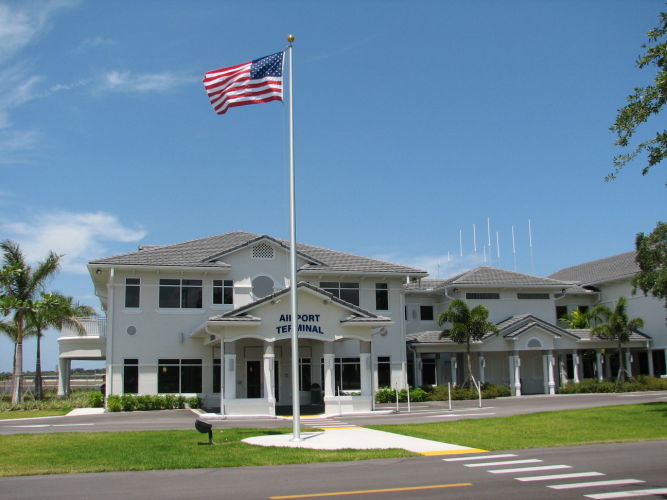
Among the customers seeking ways to reduce their Vero electric bill is the city’s own airport, but time is running out on federal subsidies designed to encourage renewable energy.
The Vero Beach Regional Airport budgets $120,000 annually for utilities, and roughly 90 percent of that goes to electricity.
In hopes of cutting its electric costs, the airport is working with ConEdison Solutions to determine whether some of the airport’s 1,700 acres can be used to produce electricity with rows of solar panels – perhaps even between runways and taxiways.
“We are presently gathering data on three possible locations for solar farms,” said Airport Director Eric Mengar. “We hope to have the feasibility study completed in time for the next Airport Commission meeting on February 25.”
Airport Commission Chair Barbara Drndak pointed out that the airport covers approximately a quarter of the city’s total acreage, much of it not suited for development. Pete Ricondo, the consultant completing Vero’s airport master plan required by the Federal Aviation Administration, added, “This airport has plenty of land that does not need to be used in the 20-year plan.”
One of the sites being considered is 37 acres located between the runways, Craig Fisher of ConEdison Solutions said.
Another site is 44 acres to the north, while the third site is 69 acres to the west. All the sites, Fisher said, have pros and cons. The area between the runways is already cleared and is not near tall buildings. Setbacks, he said, are important so there are no shadows on the panels.
“Ideally solar produces the most energy when it’s facing due south, so the optimal site for solar is a place where you can point your panels due south that also is in close proximity to connection with the electric system,” Fisher said, noting that the airport has an electric substation. “For solar this would be prime real estate. We don’t need beachfront property.”
Fisher said that once his team reviews the three potential sites, the city could expect to hold a workshop showing what the solar farm might look like, and the Airport Commission could decide whether it wants to go forward.
At the same time, ConEdison would study how to connect the solar farm into Vero’s power grid. Once the costs and risk of all these things are known, ConEdison would work with the airport to market the project to investors and execute all the required agreements and leases with Vero.
Due to the advent of grant funding for renewables and the desire of airports to reduce costs and diversify, airports large and small are entering into solar partnerships with power providers and with companies like ConEdison.
Not far from Vero, the Lakeland Linder Regional Airport already has a solar farm and is in the process of installing a major 30-acre expansion. When the expansion was approved, Airport Director Gene Conrad was quoted as saying “the 5.5-megawatt solar array already installed at the airport takes care of about 92 percent of the airport’s electricity bill,” and the new installation would take care of the rest of the bill.
Lakeland’s project, which would cover more than 250 acres when all phases are complete, is a partnership of Lakeland Electric, the airport and SunEdison, a division of ConEdison. Lakeland has been able to obtain grants to offset some of the costs of installing the solar farm, but the window for netting grant money may be closing at the end of the year. The federal solar investment tax credit for commercial solar farms expires on Dec. 31, 2016, unless Congress extends the date.
That tax credit has attracted private investors and corporations to finance the design and construction of solar energy facilities. Companies like ConEdison could finance the solar farm should the airport decide to go that way.
Under the current 30 percent tax credit, Fisher said, if the company invested in a $10 million system for Vero, the corporation could get a $3 million tax credit for doing so. After Jan. 1, if Congress does not extend the 30 percent, that credit would drop to 10 percent. ConEd is also working with the Indian River County School District to plan a solar project for Vero Beach High School.
Members of Vero’s Utilities Commission are watching the solar project with great interest and earlier this month voted to include an examination of how the proposed solar farm might affect Vero electric in its goals for 2016.
It’s not clear how or if Vero electric would be involved in the solar farm, except to take the electricity produced and only bill the airport for the net of any power used in excess of what is produced by solar.



